![]()
October 7, 2005 | By David Meir-Levi
First published by the freerepublic. Part 2 of a comprehensive study (published by the Center for the Study of Popular Culture, LA, California, USA, 7 october 2005) about the lies and myths that fuels the propaganda war against Israel and its existence as a Jewish State. Because of the extensive length of this study, it’s published according to the original 3 chapters. Read Part 1: here and Part 3: here.
The Eight Stages of the Creation of the Problem
The flight of Arabs from what would soon become Israel took place in eight stages.
- Stage One:
As early as the Fall of 1947, months before the UN partition plan of November 29, 1947, it was clear that there would be a war no matter how the partition lines were drawn. In anticipation of this war, many of the well-to-do Arabs (the effendi) of Western Galilee, from Haifa to Acco and villages in between, closed down their houses and went to Beirut or Damascus. With their wealth and connections, they could wait out the war in safety. No one imagined the infant state of Israel could win a war with the Arab states. The Arabs who left thought that they would be out of the way of danger, and when the war was over they would come back to their homes. Current estimates by objective observers (Conor Cruise O’Brien, in his book The Siege, being perhaps the most objective) is that about 70,000 fled.
- Stage Two:
These refugees caused a sudden absence of political and social leadership among the Arabs of Galilee, and thus as the hostilities developed in the winter of 1947, many of the Arab peasantry (Felahin) fled as well, following their leaders’ example. They lacked the money and connections to make a comfortable trip out of the way of danger, as their effendi had done. So many of them simply walked with whatever they could carry to Lebanon or Syria. Their leadership had fled, which led them to assume that things must be pretty bad, so they figured they had better leave too. They too were sure, based upon documentation from Arab press at the time, that when the war was over and the Jews were all dead or driven from Israel, they would come back to their homes.
There are no solid numbers for this exodus, but estimates range around 100,000 people. There were so many exiting that the Arab states had a special conference in Beirut to decide how to handle all the Arabs that were pouring across the borders. They set up special camps, later to be known as refugee camps.These Arabs were fleeing of their own free will. No one, neither Israel nor Arab states, were encouraging, frightening, or ordering them to do so. The war had not yet even begun.
- Stage Three:
After November 29, 1947, warfare between the Israeli Haganah and para-military Arab volunteers numbering in the tens of thousands began in earnest.
The Arab press and public speeches made it clear that this was to be a war of annihilation like those of the great Mongol hordes killing all in their path. The Jews would be either dead or out. Israel was fighting not a war of independence, but a war of survival.
In order to defend some areas where Jews were completely surrounded by Arabs (like the Jews of Jaffa, Jewish villages or kibbutzim in parts of Galilee and the central hill country, and in Jerusalem), the Haganah adopted scare-tactics that were intended to strike terror into the Arab population of those areas, so that they would retreat to safer ground. Then, it would be possible for the Haganah to defend those Jews who would otherwise be inaccessible and thus vulnerable to genocidal Arab intentions.
Many Arabs in parts of western Galilee, Jaffa, and parts of western Jerusalem, fled because of tactics such as rumors that a huge Jewish army from the West was about to land on the coast, hand-grenades thrown on front porches of homes, jeeps driving by and firing machine guns into the walls or fences of houses, rumors circulated by Arabic speaking Jews that the Haganah was far bigger than it really was and was on the verge of surfacing with a massive Jewish army, etc.
Here it is important to note that Jews were responsible in this part of the Arab flight. But it was not because they wanted to ethnically cleanse the country, or to wipe out the Arabs. It was because they knew that outnumbered Jews, undefended in Arab enclaves would be slaughtered (as in fact was the case of Jews in the Gush Etzion villages and in the Jewish Quarter of the Old City in Jerusalem, and as had happened in Hebron in 1929). It was the exigency of their fighting a war of survival against a bigger and better armed enemy that drove them to the tactics described above.
It is also important not to forget these facts: Had the Arab leadership accepted the UN partition plan, there would have been a state of Palestine since November 29, 1947, for the Arabs, alongside of Israel. Had the Arab armies not invaded, there would have been no refugee problem. Keeping in mind these two facts, it is clear that the total onus of culpability for the start of the refugee problem rests squarely and solely upon the Arab states that invaded, in clear disregard for the UN resolution 181 and international law.
- Stage Four:
Arab leadership from among the para-military forces and the forces of Syria were vociferous in their announcements that they wanted Arabs to leave so that the armies would have a clear field in which to perpetrate their genocide of the Jews. When the war was over and the Jews were driven out or killed, the Arab residents could come back and have both their own lands and those of the Jews.
We cannot know how many Arabs fled because of these announcements; but since a number of Arab spokespersons after the war admitted to having done this, and wrung their hands publicly in painful repentance of having created the refugee problem, it is clear that the Arab leadership’s own message to many Arabs in the area was a major factor in the Arab flight.[1]
It is also important to point out at this time that there were a number of cases where Jewish leaders got out in public and pleaded with Arabs not to leave. The mayor of Haifa is the best example of this. At the risk of his own life, he drove through the Arab section of Haifa with a loudspeaker on his jeep, and in Arabic called out to the residents of his city to disregard the Arab propaganda.
Nonetheless, tens of thousands fled. The incredulous British officers who witnessed this, documented it in a variety of sources. Those Arabs who stayed were unharmed and became citizens of Israel.[2]
The British also documented for the world a similar phenomenon in Tiberius (a town in which the Arab population vastly outnumbered the Jewish). The Arabs quite literally chose to leave even though they were under no direct threat from the Jews and asked the British to assist them. Tens of thousands left under British guard, while the Jews, both civilian and Haganah, looked on. In a slightly different twist, the Arabs of Safed (Tzefat) fled before the Haganah attack, even though the Arab forces in Safed outnumbered the Jews about 10 to one.
Wherever Arabs chose to stay, they were unharmed and later became citizens of Israel.
There have been a number of essays written by later historians contesting the truth of the assertion that Arab leaders told their people to flee. But Conor Cruise O’Brien’s The Siege and Mitchell Bard’s Myths and Facts of the Middle East Conflict offer irrefutable proof of the existence of such pronouncements.
- Stage Five:
Deir Yassin: The events that took place at Deir Yassin are still hotly disputed. But by their own admission, Arab leadership today acknowledges that the lies created by the Arabs about the fictitious “massacre” were concocted in order to shame the Arab armies into fighting against the Jews, frighten the Arabs, and encourage them to flee.[3] The village sits near Jerusalem, overlooking the road from Tel Aviv. Jewish Jerusalem was under siege, and its only lifeline was this one road to Tel Aviv. A contingent of Iraqi troops had entered Deir Yassin on March 13, 1948. Some sources suggest that they were asked to leave. Apparently they did not, since their armed bodies were numerous among the dead after the battle. It was obvious that they were going to try to cut off that road. Doing so would spell the end of Jewish Jerusalem. So on April 9, 1948, a contingent of the Irgun (a para-military splinter group) entered the village. This operation was completely legitimate in the context of rules of engagement, since the Iraqi presence made the village a legal military objective.
Their intent, to capture the village and drive out the Iraqis, was completely clear from the onset, because they entered with a jeep and loudspeaker telling the civilian population to flee the village. Unfortunately, this jeep slid into a ditch, so some of the villagers may not have heard the message; however, many did and fled before the Irgun got to the village. Rather than surround the village and prevent their escape, the Irgun left several routes open for the civilians to flee, which hundreds of villagers used. However, the Iraqis had disguised themselves as women — it is easy to hide weapons beneath the flowing robes of the burqa — and had hidden themselves among women and children in the village. So, when the Irgun fighters entered, they encountered fire from “women!”
When the Irgun fighters fired back, they killed innocent women because the Iraqis were dressed like women and hiding behind them. After suffering more than 40 percent casualties to their forces, the Irgun succeeded in killing or capturing the Iraqis. Then, while they were in a group, still dressed as women, having surrendered and agreed to be taken prisoner, some of the Iraqis opened fire again with weapons concealed beneath their women’s clothing. Irgun fighters were caught off guard, more were killed, and others opened fire into the group. Iraqis who had indeed surrendered were killed along with those who had only pretended to surrender and had then opened fire.
When the Haganah arrived they found the dead women and other civilians and thus incorrectly accused the Irgun of murder and massacre. But the Red Cross, which was called in to assist the wounded and civilians, found no evidence of a massacre. In fact, even the most recent review of the evidence (July 1999), by Arab scholars at Beir Zayyit university in Ramallah, indicates that there was no massacre, but rather a military conflict in which civilians were killed in the crossfire. The total Arab dead, including the Iraqi soldiers, according to the Beir Zayyit calculation, was 107.
So where did the idea of a massacre come from? The same Arab sources that confess to having urged the Arabs to flee have also acknowledged that Arab spokespersons at the time cynically exaggerated the casualties of the Deir Yassin battle, making up stories of gang rape, brutalizing of pregnant women, killing unborn children cut from their mothers’ wombs by blood-thirsty Jews, and massive murders with bodies thrown into a nearby quarry. The same Arab sources admit that their purpose in these lies was to shame the Arab nations into entering the conflict with greater alacrity, so that the Jews would be destroyed by the overwhelming numbers of Arab invaders.[4]
The plan backfired. As a result of this propaganda, Arab civilians panicked and fled by the tens of thousands. This was confirmed in the 1993 PBS documentary called The Fifty Years of War in which Deir Yassin survivors were interviewed. They testified that they had begged Dr. Hussein Khalidi, director of Voice of Palestine (the Palestinian radio station in East Jerusalem) to edit out the lies and fabrications of atrocities that never happened. He told them: “We must capitalize on this great opportunity!”
The flight of Arabs had begun many months before Deir Yassin. So Deir Yassin cannot account for those hundreds of thousands of Arabs who sought refuge prior to April 9, 1948. Moreover, while current Arab propaganda asserts that Deir Yassin was one of many examples of Jewish massacre and slaughter, there is not one other documented example of any such behavior by the Jews. By any standard, Deir Yassin was not an example, but an exception.
In sum, it was not what happened at Deir Yassin that caused the flight of tens of thousands of Arabs; it was the lies invented by the Arab High Command and Dr. Hussein Khalidi of the “Voice of Palestine” radio news channel that caused the panic. One can hardly blame Israel for that.
Moreover, we have information from a famous source, Yassir Arafat himself (his authorized biography, by Alan Hart, Arafat: Terrorist or Peace Maker) that the Deir Yassin lies were spread “like a red flag in front of a bull” by the Egyptians. Then, having terrorized them with these stories, the Egyptians proceeded to disarm the Arabs of the area and herd them into detention camps in Gaza (today’s Gaza refugee camps). Why did the Egyptians do this? According to Arafat, it was to get the Arabs out of the area because the Egyptians wanted a free hand to wage their war. Egypt had every intention of conquering the Negev and southern part of the coastal plain. They wanted no interference from the local Arabs.
Deir Yassin was not a massacre; nothing even vaguely akin to what the Jews are accused of ever happened. We don’t know how many Arabs fled as a result of the Arab propaganda over Deir Yassin. Several hundred thousand is a good estimate. Most of them ended up in the Egyptian detention camps in Gaza.
- Stage Six:
Besides Deir Yassin, there are two other incidents in which Arab refugees are said to have fled because of Israeli army actions: Lydda and Ramle.
Both villages sat astride the road from Tel Aviv to Jerusalem. As the siege on Jerusalem tightened, the Israeli forces knew that in order to save the Jews of west Jerusalem from defeat and possible annihilation, they had to keep that road open. So one night they entered both villages and forcibly drove out the Arab residents. They rousted them from bed and sent them walking across the fields to the area that was under Jordanian control some kilometers away.
None were killed. There was no massacre, but they were driven out. On the other hand, they were driven out because their villages sat astride the road to Jerusalem, and the only way to guarantee the survival of 150,000 Jews in Jerusalem was to control this one road.
- Stage Seven:
By May 15, 1948, the British had evacuated their forces from all of British Mandatory Palestine, and the Haganah, which now became the Israeli Defense Force (IDF), had a free hand. The Arab countries also had a free hand in attacking, and attack they did. Armies from eight Arab dictatorships poured into the area from Lebanon, Syria, Jordan, Iraq and Egypt (volunteers and soldiers from Saudi Arabia, Yemen and Morocco came too). They outnumbered the IDF about five to one. For the next month or so the Israelis were fighting a terribly difficult defensive war and were just barely able to keep the invaders out. There were about 63,000 IDF volunteers, but weapons for only 22,000.
In June 1948 the UN imposed a cease-fire. By July when the Arabs re-initiated hostilities, the Israelis had been able to use the cease-fire to import arms and planes from Russia and Germany via Czechoslovakia. Now better armed, the IDF numbered 65,000 and the odds were reduced to about 2 to 1. Those were good odds for the determined Jewish fighters.
When the fighting resumed in July, the IDF went on the offensive and succeeded in driving the Arab armies out of both the Jewish areas and large parts of the areas that the UN had intended to be the Palestinian state (western Galilee, and southern coastal plain north of Gaza). When this offensive began, more Arabs fled. As noted above, the Arabs who stayed were not harmed and became citizens of Israel.
Contrary to revisionist Arab propaganda, there was never any intent to massacre Arabs, although the Arabs clearly intended to massacre the Jews. Many civilians died in the cross fire, and the overwhelming majority of Arabs who fled did so needlessly, at their own initiative, or because of the Arab leadership that lied and intimidated them. In at least two specific cases a few Arabs were driven out by the IDF as a defensive measure. It was not part of any plan to ethnically cleanse the land or massacre the Arabs. These accusations are all part of a new and mendacious revisionism aimed at exonerating the Arabs from their culpability as aggressors and from their role in creating the Arab Refugee problem. Their agenda is to transfer the guilt from themselves — where it belongs — to Israel.
Proof that Israel never set out to ethnically cleanse the Arabs of Palestine is to be seen in the following facts:
- The complete absence of any coverage in any world press, including the Arab press and the openly hostile western press in regard to any such actions by Israel;
- The complete absence of these accusations from any Arab spokespersons during that time, even at the very height of the flight (post-Deir Yassin), and for many years thereafter; and
- The fate of the Arabs who stayed: They became Israeli citizens and enjoy more freedom, democracy, political representation, high standard of living better education, and economic opportunities, than many Arabs anywhere in the Arab world today.
Finally, after the February 1949 cease-fire that signaled the end of the war, there was still a continued flight by tens of thousands of Arabs. The Jews did absolutely nothing to encourage or force this flight.
- Stage Eight:
During the Rhodes armistice talks in February 1949, Israel offered to return to the Arabs the lands it now occupied as a result of the war and that were originally meant to be part of the Palestinian state if the Arabs would sign a peace treaty. This would have allowed hundreds of thousands of refugees to return to their homes. But the Arabs rejected the offer because, as they themselves admitted, they were about to mount a new offensive. They had lost round one but they were hoping for more and more rounds until the Arabs achieved victory. Their new offensive took the form of 9000 terrorist attacks by the fedayeen mostly from Egypt that were perpetrated against Israel from 1949 to 1956.
At the Lausanne conference which took place from August to September 1949, Israel offered to repatriate 100,000 refugees even without a peace treaty. But the Arab states rejected the offer because to accept it would involve a tacit recognition of the state of Israel.
In other words, despite Israel’s offers of repatriation, the Arabs insisted on keeping the Arab refugees in squalor and suffering. Arab spokespersons in Syria and Egypt were quoted in their newspapers as saying: We will keep the refugees in their camps until the flag of Palestine flies over all of the land. They will go back home only as victors, on the graves and corpses of the Jews.
Moreover, as some Arabs were candid enough to announce in public, the refugee problem would serve as “a festering sore on the backside of Europe,” as moral leverage to be used against Israel in order to win the emotional support of the West against Israel.
Conclusion
The Arab refugee problem was created by the belligerent Arab dictators who defied the UN, invaded Israel, encouraged the Arabs to flee, and then purposely kept the Arab refugees in a state of wretched poverty for propaganda purposes. Israel’s role in creating the refugee problem was a relatively minor one restricted to legitimate military contexts. It tried to reverse these after the war, but was rebuffed by the Arab states.
The refugee problem was then intentionally perpetuated by the Arab states through their refusal to abide by the UN resolutions and the Geneva convention, their refusal to integrate any refugees into under-populated Arab countries (except for Jordan), their refusal to enter into peace negotiations with Israel, and their refusal to countenance any steps toward resolution by Israel or others.
By perpetuating the refugee problem, the Arab leaders sought to gain pseudo-moral leverage against Europe and Israel, to keep a “festering human sore” in the forefront of their propaganda war against Israel, and to use the issue as a political weapon against Israel.
As late as 1979, when Egypt signed a peace treaty with Israel, the Egyptians refused to deal with the refugee issue in the Gaza strip and instead ceded all of the Gaza strip to Israel. A similar pattern was established in Jordan’s 1994 peace treaty with Israel. Jordan had integrated thousands of Palestinians into its economy and did not see any need or responsibility to deal with the disposition of those on the West Bank.
The abuses, exaggerations, lies, and distortions perpetrated by Arab governments, by the UN Refugee Agency, and the refugee spokespersons made it impossible, even back in 1949, to identify a bona fide refugee populace.
In 1967, the Arab states again launched an aggressive war against Israel and as a result Israel became the governing authority in the Gaza Strip, Sinai Peninsula, the Golan Heights, and in the West Bank. Under Israeli rule from 1967 to 1992, The Palestinian population of the West Bank experienced the highest standard of living of any Arab country with the exception of the oil states. The same is true of Arab Israelis. The Arab population of the West Bank and Gaza has tripled since June 1967!
By contrast, since the transfer of authority in the West Bank to the PLO in 1993, the condition of the Palestinian population under the Palestinian Authority has declined precipitously. The standard of living of the West Bank Palestinians has eroded, and GDP is one-tenth of what it was under Israeli control. This is due to the mis-appropriation of more than $5.2 billion by the rule of the Palestinian Authority into the personal accounts of Arafat and his lieutenants for weapons stock-piling, neglect of the infrastructure, and due to the continuous terror war, against which Israel must exercise defensive controls and deterrents.
Justice for Jewish and Arab refugees could have been part of a peace settlement if the Arab states had been willing. Today, solutions are possible, but only if the Palestinian Authority will stop its new war of terror.
![]()
Appendix
Sources confirming that Arab leaders told Arabs to flee and reports related to the departure of the Arab refugees:
- “The first group of our fifth column consist of those who abandon their homes… At the first sign of trouble they take to their heels to escape sharing the burden of struggle” — Ash-Sha’ab, Jaffa, January 30, 1948.
- “(The fleeing villagers)…are bringing down disgrace on us all… by abandoning their villages” — As-Sarih, Jaffa, March 30, 1948.
- “Every effort is being made by the Jews to persuade the Arab populace to stay and carry on with their normal lives, to get their shops and businesses open and to be assured that their lives and interests will be safe.” — Haifa District HQ of the British Police, April 26, 1948, (quoted in Battleground by Samuel Katz).
- “The mass evacuation, prompted partly by fear, partly by order of Arab leaders, left the Arab quarter of Haifa a ghost city…. By withdrawing Arab workers their leaders hoped to paralyze Haifa.” — Time Magazine, May 3, 1948, page 25.
- “The Arab streets (of Palestine) are curiously deserted (because)…following the poor example of the moneyed class, there has been an exodus from Jerusalem, but not to the same extent as from Jaffa and Haifa”. — London Times, May 5, 1948.
- “The Arab civilians panicked and fled ignominiously. Villages were frequently abandoned before they were threatened by the progress of war.” — General John Glubb “Pasha,” — The London Daily Mail, August 12, 1948.
- “The fact that there are these refugees is the direct consequence of the act of the Arab states in opposing partition and the Jewish state. The Arab states agreed upon this policy unanimously and they must share in the solution of the problem.” — Emile Ghoury, secretary of the Palestinian Arab Higher Committee, in an interview with the Beirut Telegraph September 6, 1948. — (same appeared in The London Telegraph, August 1948).
- “The most potent factor [in the flight of Palestinians] was the announcements made over the air by the Arab-Palestinian Higher Executive, urging all Haifa Arabs to quit… It was clearly intimated that Arabs who remained in Haifa and accepted Jewish protection would be regarded as renegades.” — London Economist October 2, 1948.
- “It must not be forgotten that the Arab Higher Committee encouraged the refugees’ flight from their homes in Jaffa, Haifa, and Jerusalem”. — Near East Arabic Broadcasting Station, Cyprus, April 3, 1949.
- “The Arabs of Haifa fled in spite of the fact that the Jewish authorities guaranteed their safety and rights as citizens of Israel.” — Monsignor George Hakim, Greek Catholic Bishop of Galilee, New York Herald Tribune, June 30, 1949.
- “The military and civil (Israeli) authorities expressed their profound regret at this grave decision (taken by the Arab military delegates of Haifa and the Acting Chair of the Palestine Arab Higher Committee to evacuate Haifa despite the Israeli offer of a truce). The Jewish mayor of Haifa made a passionate appeal to the delegation (of Arab military leaders) to reconsider its decision.” — Memorandum of the Arab National Committee of Haifa, 1950, to the governments of the Arab League, quoted in J. B. Schechtman, The Refugees in the World, NY 1963, pp. 192f.
- Sir John Troutbeck, British Middle East Office in Cairo, noted in cables to superiors (1948-49) that the refugees (in Gaza) have no bitterness against Jews, but harbor intense hatred toward Egyptians: “They say ‘we know who our enemies are (referring to the Egyptians)’, declaring that their Arab brethren persuaded them unnecessarily to leave their homes…I even heard it said that many of the refugees would give a welcome to the Israelis if they were to come in and take the district over.”
- “The Arab states which had encouraged the Palestine Arabs to leave their homes temporarily in order to be out of the way of the Arab invasion armies, have failed to keep their promise to help these refugees.” — The Jordanian daily newspaper Falastin, February 19, 1949.
- “The Secretary General of the Arab League, Azzam Pasha, assured the Arab peoples that the occupation of Palestine and of Tel Aviv would be as simple as a military promenade…Brotherly advice was given to the Arabs of Palestine to leave their land, homes, and property to stay temporarily In neighboring fraternal states, lest the guns of invading Arab armies mow them down.” –Al Hoda, a New York-based Lebanese daily, June 8, 1951.
- “Who brought the Palestinians to Lebanon as refugees, suffering now from the malign attitude of newspapers and communal leaders, who have neither honor nor conscience? Who brought them over in dire straits and penniless, after they lost their honor? The Arab states, and Lebanon amongst them, did it.” — The Beirut Muslim weekly Kul-Shay, August 19, 1951.
- “We will smash the country with our guns and obliterate every place the Jews seek shelter in. The Arabs should conduct their wives and children to safe areas until the fighting has died down.” — Iraqi Prime Minister Nuri Said, quoted in Sir An-Nakbah (“The Secret Behind the Disaster”) by Nimr el-Hawari, Nazareth, 1952.
- “The Arab Exodus …was not caused by the actual battle, but by the exaggerated description spread by the Arab leaders to incite them to fight the Jews. …For the flight and fall of the other villages it is our leaders who are responsible because of their dissemination of rumors exaggerating Jewish crimes and describing them as atrocities in order to inflame the Arabs … By spreading rumors of Jewish atrocities, killings of women and children etc., they instilled fear and terror in the hearts of the Arabs in Palestine, until they fled leaving their homes and properties to the enemy.” — The Jordanian daily newspaper Al Urdun, April 9, 1953.
- “The Arab governments told us: Get out so that we can get in. So we got out, but they did not get in.” — A refugee quoted in Al Difaa.
- “The wholesale exodus was due partly to the belief of the Arabs, encouraged by the boasting of an unrealistic press and the irresponsible utterances of some of the Arab leaders that it could be only a matter of some weeks before the Jews were defeated by the armies of the Arab states, and the Palestinian Arabs enabled to re-enter and re-take possession of their country”. — Edward Atiyah (Secretary of the Arab League, London, The Arabs, 1955, p. 183).
- “As early as the first months of 1948, the Arab League issued orders exhorting the people to seek a temporary refuge in neighboring countries, later to return to their abodes … and obtain their share of abandoned Jewish property.” — Bulletin of The Research Group for European Migration Problems 1957.
- “Israelis argue that the Arab states encouraged the Palestinians to flee. And, in fact, Arabs still living in Israel recall being urged to evacuate Haifa by Arab military commanders who wanted to bomb the city.” — Newsweek, January 20, 1963.
- “The 15th May, 1948, arrived … On that day the mufti of Jerusalem appealed to the Arabs of Palestine to leave the country, because the Arab armies were about to enter and fight in their stead.” — The Cairo daily Akhbar el Yom, October 12, 1963.
- In listing the reasons for the Arab failure in 1948, Khaled alAzm (Syrian Prime Minister) notes that “…the fifth factor was the call by the Arab governments to the inhabitants of Palestine to evacuate it (Palestine) and leave for the bordering Arab countries. Since 1948, it is we who have demanded the return of the refugees, while it is we who made them leave. We brought disaster upon a million Arab refugees by inviting them and bringing pressure on them to leave. We have accustomed them to begging…we have participated in lowering their morale and social level…Then we exploited them in executing crimes of murder, arson and throwing stones upon men, women and children…all this in the service of political purposes…” — Khaled elAzm, Syrian prime minister after the 1948 War, in his 1972 memoirs, published in 1973.
- “The Arab states succeeded in scattering the Palestinian people and in destroying their unity. They did not recognize them as a unified people until the states of the world did so, and this is regrettable.” — Abu Mazen (Mahmoud Abbas), from the official journal of the PLO, Falastin el-Thawra (“What We Have Learned and What We Should Do”), Beirut, March 1976.
- “Since 1948, the Arab leaders have approached the Palestinian problem in an irresponsible manner. They have used to Palestinian people for political purposes; this is ridiculous, I might even say criminal…” — King Hussein, Hashemite kingdom of Jordan, 1996.
- “Abu Mazen charges that the Arab States are the cause of the Palestinian Refugee Problem” (Wall Street Journal; June 5, 2003):
Mahmoud Abbas (Abu Mazen) wrote an article in March 1976 in Falastin al-Thawra, the official journal of the PLO in Beirut: “The Arab armies entered Palestine to protect the Palestinians from the Zionist tyranny, but instead they abandoned them, forced them to emigrate and to leave their homeland, imposed upon them a political and ideological blockade and threw them into prisons similar to the ghettos in which the Jews used to live in Eastern Europe.”
As Abu Mazen (Mahmoud Abbas) alluded, it was in large part due to threats and fearmongering from Arab leaders that some 700,000 Arabs fled Israel in 1948 when the new state was invaded by Arab armies. Ever since, the growing refugee population, now around 4 million by UN estimates, has been corralled into squalid camps scattered across the Middle East – in Lebanon, Jordan, Syria, Gaza, and the West Bank.
In 1950, the UN set up the United Nations Relief and Works Agency as a temporary relief effort for Palestinian refugees. Former UNRWA director Ralph Galloway stated eight years later that, “the Arab states do not want to solve the refugee problem. They want to keep it as an open sore, as a weapon against Israel. Arab leaders do not give a damn whether Arab refugees live or die. The only thing that has changed since [1949] is the number of Palestinians cooped up in these prison camps.”
Read Part 1: here and Part 3: here. You can read a Dutch translation (nederlandse vertaling) of the study (chapter 2) at brabosh.com.
![]()
About the author:
David Meir-Levi is an American-born Israeli currently living in Palo Alto, California. He holds a BA from Johns Hopkins University, and an MA in Near Eastern Studies from Brandeis University. He taught Archaeology and Near Eastern History at the Hebrew University in Jerusalem and at the University of Tel Aviv in the 60’s and 70’s, during which time he completed his service in the Israeli military. Upon returning to the USA, Mr. Meir-Levi has worked as a professional Jewish educator, most recently in the San Francisco Bay Area.
Mr. Meir-Levi is the Director of Research and Education at the Israel Peace Initiative (IPI), a grass-roots not-for-profit organization in the San Francisco Bay area working to educate the American public and its leaders in to the history of the Arab-Israel conflict and realistic options for resolution. For more information about IPI, see: Israel Peace Initiative.



 RSS
RSS


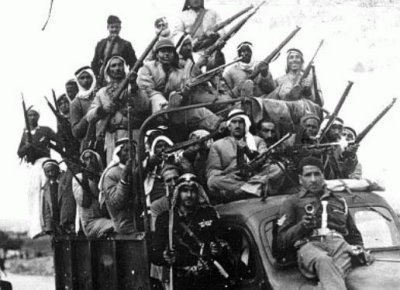
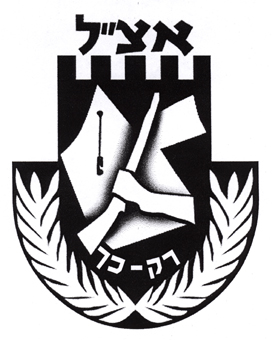
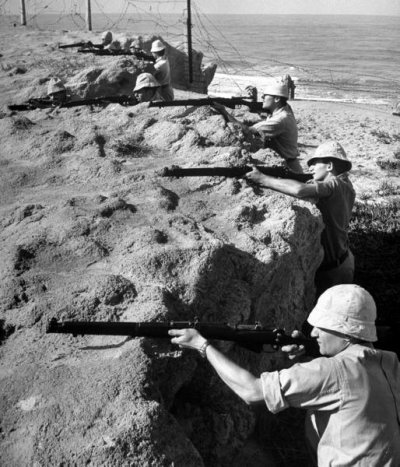
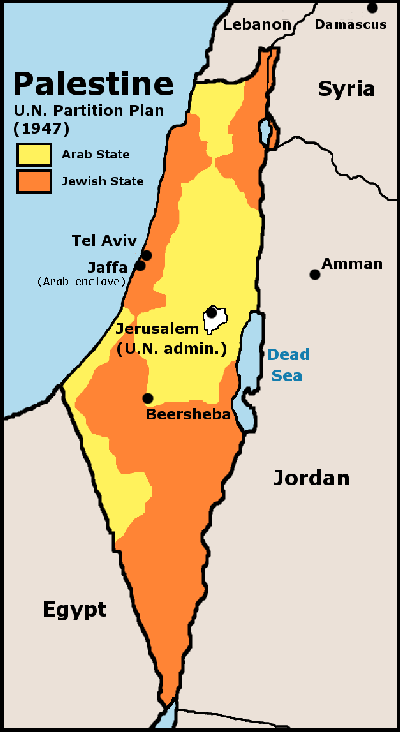


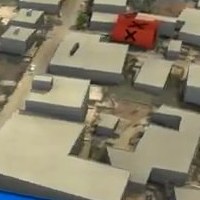
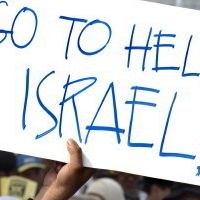
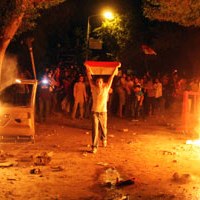







Posted new article #crethiplethi.com about BIG LIES: part 2 http://bit.ly/78lHm1
Posted new article #crethiplethi.com about BIG LIES: part 2 http://bit.ly/78lHm1
[…] post: Big Lies: demolishing the myths of the propaganda war against … Share and […]
I want to share with you one funny thing. I wave internet all the time in oder to find any objective information about Israel-arab conflict. Just type Israel in google search. You will get hundreds of arabs propaganda blogs, that shows Israel as agressor and offer to boycott it. and probably 5-6 blogs by Isreali people whos voices sinks in the mass of anti-israel articles. ty for great and interesting article that supports our country
Thank you for your compliment. We try to make a difference in bringing facts and in depth information. The truth will set us free…. You can help us as well by sharing and supporting this site. Again, thank you for your support.
https://www.crethiplethi.com/big-lies-demolishing-the-myths-of-the-propaganda-war-against-israel-part-2/israel/2009/ #BigArabLies
RT @Akusia: https://www.crethiplethi.com/big-lies-demolishing-the-myths-of-the-propaganda-war-against-israel-part-2/israel/2009/ #BigArabLies
https://www.crethiplethi.com/big-lies-demolishing-the-myths-of-the-propaganda-war-against-israel-part-2/israel/2009/ #BigArabLies